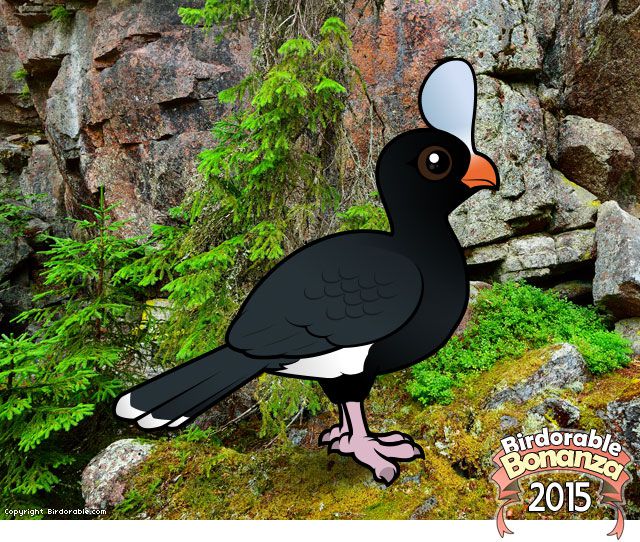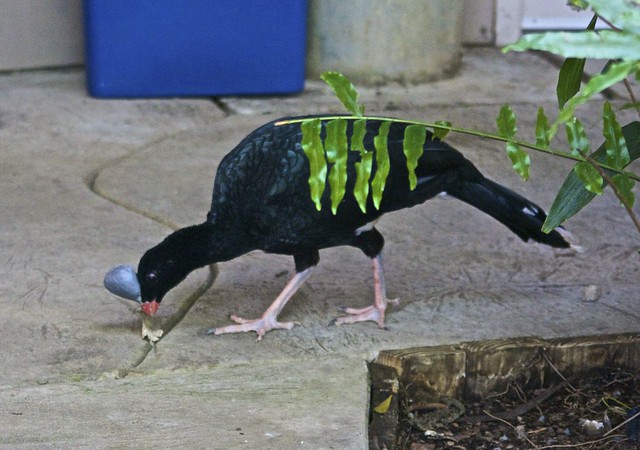2015 Bonanza Bird #19: Helmeted Curassow
Our Birdorable Bonanza: 2015 Advent Edition rolls on today with an unusual species of grouse from South America: the Helmeted Curassow!

Helmeted Curassows are large grouse found in the Venezuelan and Colombian Andes Mountains. They can be found in subtropical cloud forest habitat. Their diet primarily consists of seeds and fruits. They will also feed insects and small animals.
The Helmeted Curassow is recognized by the large blue-grey casque, or "helmet", on its forehead. This unsual feature gives the species its name. Both males and females have the casque and look alike. A rare color morph can be found in some females where the plumage is rufous with barring.
Helmeted Curassows are considered to be Endangered by the IUCN. Their current range is heavily segmented along the eastern Andes mountains in Venezuela and Colombia and the species faces major threats from habitat loss and hunting.

Photo by Jason Wesley Upton (CC BY-ND 2.0)

Helmeted Curassow by Jean (CC BY 2.0)
The Helmeted Curassow joins Birdorable today as our 635th cute cartoon bird. Be sure to check out our selection of apparel and gifts featuring our Birdorable Helmeted Curassow.
Tomorrow our Bonanza will reveal a spotted species of sparrow. Can you guess tomorrow's species?






Comments
Leave a comment
Thank you!